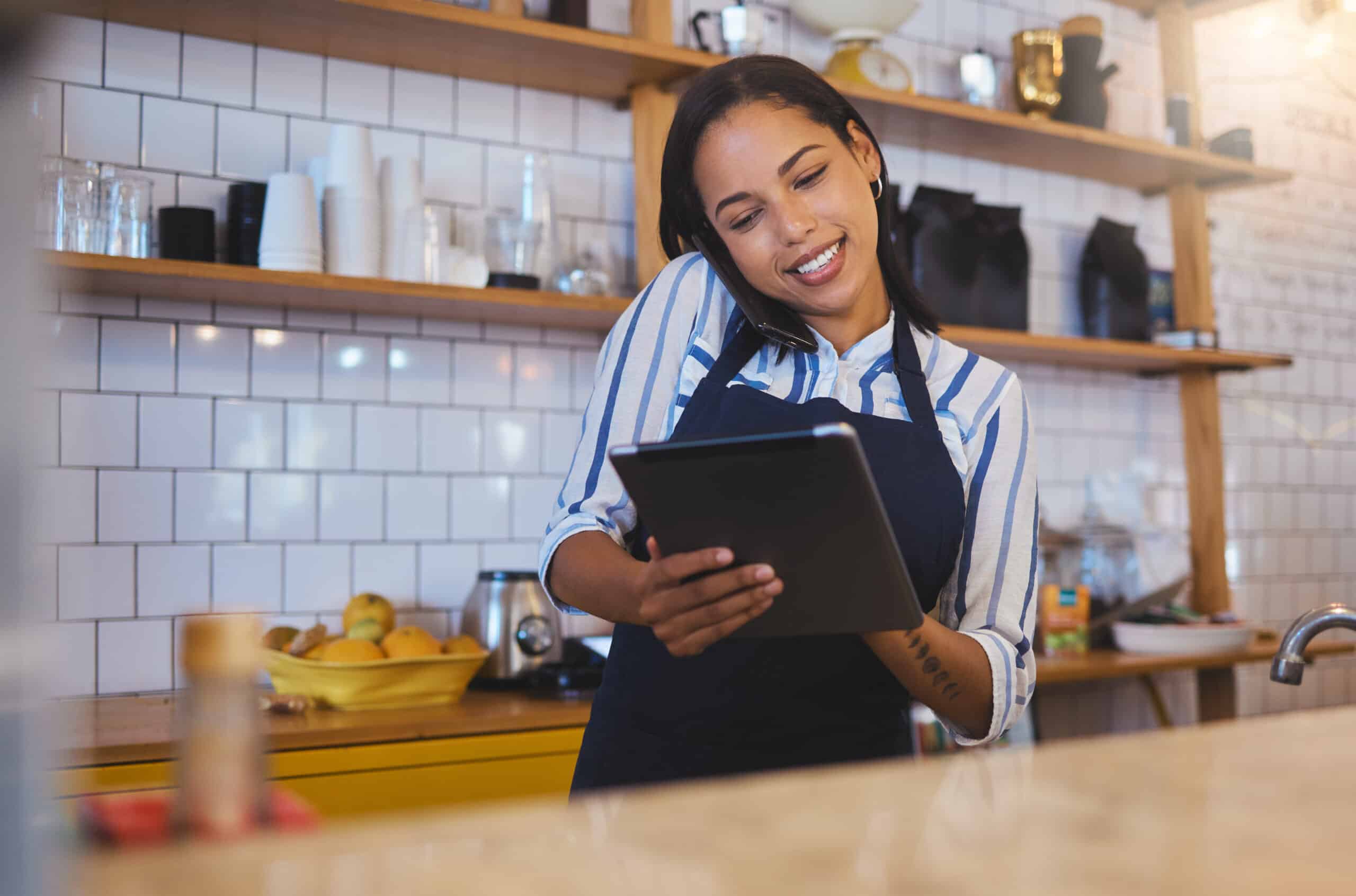For any food service business, temperature control isn’t a luxury; it’s mission critical. A single temperature deviation can escalate into a food safety incident, putting customer health and your company’s reputation at risk. To ensure food quality, meet health codes, and protect your brand, you can’t afford to settle for anything less than excellence. The challenge is that manual temperature monitoring can be ineffective. It’s vulnerable to employee error and “pencil whipping,” in which an employee falsely records food temperature without checking it.
The game-changer in this scenario is the adoption of digital temperature monitoring solutions. These high-tech solutions aren’t just digital versions of your old clipboards and checklists; they’re comprehensive management systems that integrate temperature monitoring into your broader operations, ensuring food safety and employee accountability. With features like real-time alerts, trend analytics, and modular capabilities, these platforms do more than help you pass inspections. They drive operational efficiency and set the stage for scalable growth.
Do you have questions about digital temperature monitoring? You’ve come to the right place. The experts at MeazureUp are here with the answers you’re looking for.
What is Temperature Control in Food Safety?
Temperature control in food safety refers to the stringent management of temperature conditions under which food is stored, prepared, and served. It’s a critical component of Hazard Analysis and Critical Control Points (HACCP) systems and is designed to minimize the risk of foodborne illnesses. Temperature control encompasses various stages—from receiving and storing raw ingredients to cooking and serving the final dish. Each food item has its own safe temperature range, for storage and for cooking. Failure to maintain these temperatures can result in spoilage or the proliferation of harmful bacteria, leading to potential health risks for consumers and compliance issues.
How Accurate are Digital Thermometers?
Digital thermometers are generally highly accurate, often within a range of ±1°F to ±2°F, depending on the quality and calibration of the device. Their precision is one of the reasons they have become the go-to choice for professionals. Unlike their analog counterparts, digital thermometers provide quick, clear readings, eliminating guesswork and reducing the margin of error. Some advanced digital thermometers come with features like dual sensors for more accurate readings and alerts for any deviations, adding an extra layer of reliability. These devices often undergo rigorous testing to meet industry standards, making them a reliable choice for ensuring food safety and compliance with health regulations.
However, the accuracy of a digital thermometer can be influenced by several factors, including proper calibration, the quality of the device, and even the technique used to insert the probe into the food. That’s why it’s crucial for managers to not only invest in high-quality digital thermometers but also to train their staff on proper usage and regular calibration procedures.
What is the Best Digital Food Thermometer?
When it comes to selecting a digital thermometer, industry professionals should consider several key features to ensure they’re getting the most out of their investment. Here are some essential attributes to look for:
-
- Precision and Speed: The thermometer should provide accurate readings quickly. In a fast-paced environment, there’s no time for second-guessing or waiting for slow readings.
- Data Logging and Analytics: The ability to log temperature data over time and analyze trends is invaluable. This feature allows for proactive management and is crucial during health inspections.
- Real-Time Alerts: Immediate notifications for temperature deviations help prevent food spoilage and safety incidents before they happen.
- User-Friendly Interface: An intuitive, easy-to-use interface ensures that all staff members are able to effectively use the thermometer, reducing the risk of user error.
- Durability and Reliability: The thermometer should be durable and reliable, capable of withstanding high temperatures, moisture, and accidental drops.
- Integration Capabilities: To create a cohesive, streamlined operation the thermometer should easily integrate with other digital solutions being used, such as inventory management systems or compliance checklists.
- Compliance Features: Look for thermometers that make it easy to print or digitally share temperature logs and other compliance information, especially useful during inspections.
By focusing on these features, managers ensure they select a digital thermometer that not only meets regulatory requirements but also enhances operational efficiency and food safety protocols.
How Should a Food Handler Test the Temperature of Food?
A food handler should test the temperature of food using a calibrated and accurate digital thermometer, following a systematic approach to ensure the most reliable results. Here’s a step-by-step guide:
-
- Calibrate the Thermometer: Before using the thermometer, it’s essential to calibrate it to ensure accuracy. This can usually be done using the ice-water or boiling-water method, depending on the manufacturer’s instructions.
- Clean and Sanitize: The probe of the thermometer should be cleaned and sanitized before and after each use to prevent cross-contamination.
- Insert the Probe: For solid foods like meat or poultry, insert the probe into the thickest part of the item, avoiding bone, fat, or gristle. For liquids like soups or sauces, stir well to distribute heat evenly before inserting the probe.
- Wait for Stabilization: Allow the thermometer reading to stabilize. Digital thermometers usually provide quick and accurate readings within seconds.
- Check Multiple Points: Especially for larger food items, it’s advisable to check multiple points to ensure that the entire item has reached the desired temperature.
- Record the Temperature: Log the temperature reading immediately for compliance and monitoring purposes. Digital solutions often allow for automatic logging, streamlining this process.
- Take Corrective Action: If the temperature is outside the safe range, take immediate corrective action. This could mean continuing to cook the food, adjusting storage temperatures, or discarding the item if it cannot be brought to a safe temperature.
- Clean and Sanitize: Prepare the thermometer probe properly before storing it or using it on another food item.
What Temperature Should a Restaurant Freezer Be?
Maintaining the proper temperature in freezers, refrigerators, and other equipment is crucial for food safety and quality. Here are the recommended temperature ranges for various common storage units:
Freezer
-
- Recommended Temperature: -18°C (0°F) or lower
- Purpose: To keep food frozen and safe for long-term storage.
Refrigerator
-
- Recommended Temperature: 0°C to 4°C (32°F to 40°F)
- Purpose: To keep perishable food items like dairy, meat, and vegetables fresh and safe for short-term storage.
Walk-In Cooler
-
- Recommended Temperature: 0°C to 4°C (32°F to 40°F)
- Purpose: For bulk storage of perishable items. The same temperature range as a standard refrigerator is recommended.
Dry Storage
-
- Recommended Temperature: Around 21°C (70°F)
- Purpose: For storing non-perishable items like canned goods, grains, and spices.
Hot Holding Units
-
- Recommended Temperature: At least 60°C (140°F)
- Purpose: To keep cooked food hot and safe for consumption until it’s served.
Cold Holding Units
-
- Recommended Temperature: 0°C to 4°C (32°F to 40°F)
- Purpose: To keep prepared or partially prepared food items cold until they are cooked or served.
Blast Chiller
-
- Recommended Temperature: Varies, but usually can chill food from 70°C (158°F) to 3°C (37°F) in 90 minutes.
- Purpose: Rapidly lowers the temperature of cooked foods to make them safe for storage and to retain quality.
Maintain Safe Food Temperature with a Digital Solution
Digital temperature monitoring systems are invaluable in maintaining food and equipment temperatures, as they provide real-time data, trend analytics, and instant alerts for any deviations from the set ranges. This ensures both compliance with food safety regulations and the delivery of high-quality food to customers.
For maximum impact, choose a restaurant temperature monitoring system that works with your digital field assessment and checklist apps. This will put all your important data in one place, so you don’t have to jump between different systems to get the full picture, saving time and reducing mistakes. If there’s a temperature issue, you’ll know right away and can fix it before it becomes a bigger problem. It’s a straightforward way to hold employees accountable, keep your restaurant safe, and meet health standards, all while making your day-to-day tasks more manageable.
From ensuring accurate readings to streamlining compliance tasks, digital solutions are transforming food service. Are you ready to elevate food safety protocols and operational efficiency at your business? It’s time to explore what modern technology has to offer. Schedule a demo of MeazureUp today.



